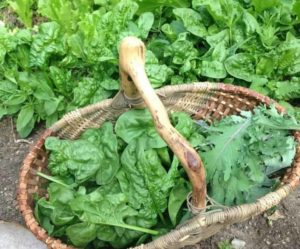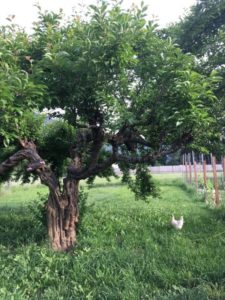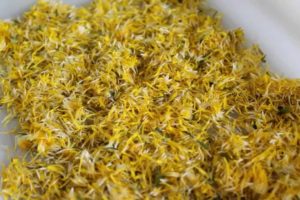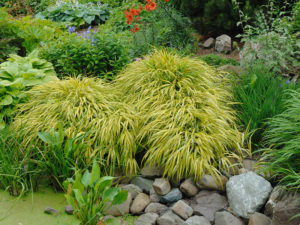Lettuce, an annual plant of the Asteraceae family, is commonly grown as a leaf vegetable. This plant category has clusters of leaves, a short stem, and reaches 19 inches tall. The plant prefers cool weather and comes in a range of colors.
There are hundreds of types of lettuce, each unique in taste, texture, appearance, nutritional properties, and growth habits. Some lettuces have tall heads and soft, dark green leaves, while others are loosely formed, crunchy, and have red-speckled, crinkled leaves.
Lettuces are easy to grow, as long as they’re watered regularly and kept in appropriate soil and light conditions. Species that are slow to bolt, hardy, and fast-growing are ideal for beginner gardeners.
Lettuce Types for the Garden
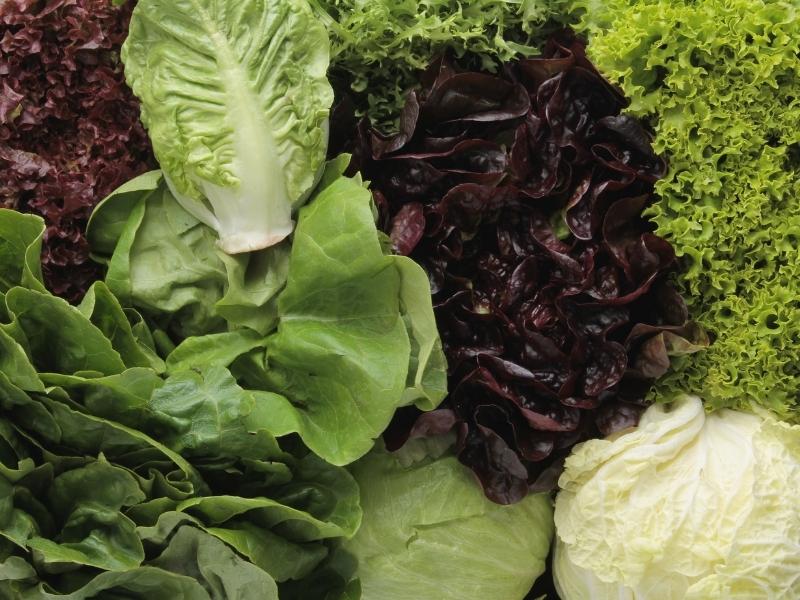
While each lettuce is unique in its own right, most lettuces fall into five distinct categories — butterhead, loose-leaf, romaine, crisphead, and stem — based on their head size, leaf shape, and growth habits, and texture.
- Loose-leaf lettuce: Loose-leaf species lack a firm head, have loosely-bunched leaves, and come in a range of colors. Most loose-leaf lettuces have a tender texture and a slightly sweet, mild flavor. Leaves can be broad, frilly, smooth, or crinkled
- Romaine lettuce: Also known as cos lettuce, romaine lettuce has an upright head, crunchy texture, and dark green, narrow leaves with prominent white ribs. Unlike most other lettuce varieties, romaine lettuces can typically tolerate hot weather
- Crisphead lettuce: Also known as iceberg lettuce, crisphead lettuce is round and compact with a dense head and tightly-packed leaves. The outer leaves are a green hue, while the inner leaves are white. Crisphead lettuce doesn’t have a strong flavor and lacks nutritional value, but it’s still widely grown for its crispy texture
- Butterhead lettuce: Butterhead lettuce gets its name from its distinctive buttery flavor. The plant is leafy and soft, with a loosely-formed head that resembles cabbage
- Stem lettuce: Also known as asparagus lettuce, stem lettuce has a thick stem with small bushy leaves at the top. The lettuce has a nutty flavor and is popular in Asian cuisine, where it’s often pickled and used in stir-fries
Different types of lettuces are often interbred together to form new types. These lettuce fusions rarely fit into one specific category because they exhibit a combination of traits from their parent varieties.
Nevada Lettuce
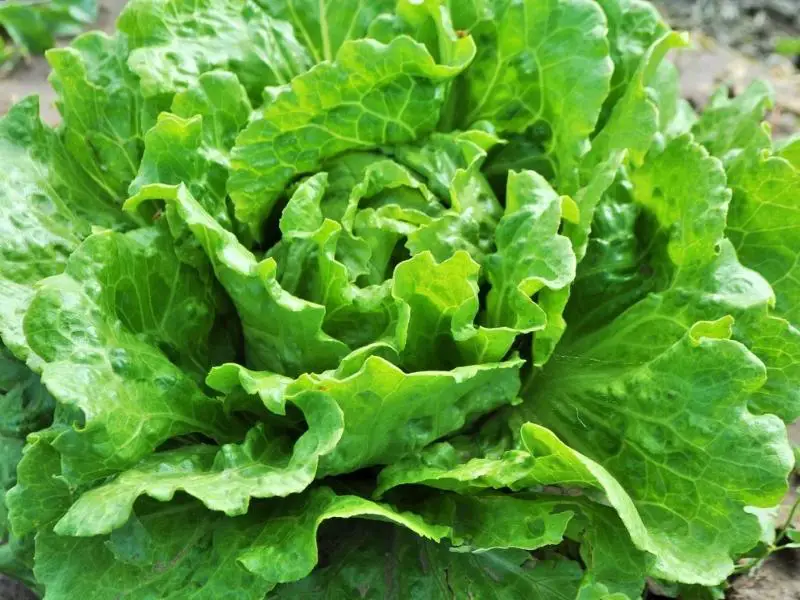
Nevada, a hybrid variety of lettuce, is bright green and has distinctive ruffled leaves that form a dense, heavy head. Nevada lettuce is known for its ease of care, tolerance of harsh weather, and crunchy texture.
Nevada reaches 6 to 12 inches tall. The lettuce is particularly well-suited to baby leaf production because the immature leaves are loose, tender, and sweet. The plant matures within 48 days.
Feed this variety regularly to help it develop a dense, compact head. The seeds must be planted 12 inches apart, and the soil should be well-draining and at a pH level of around 6.0.
New Red Fire Lettuce
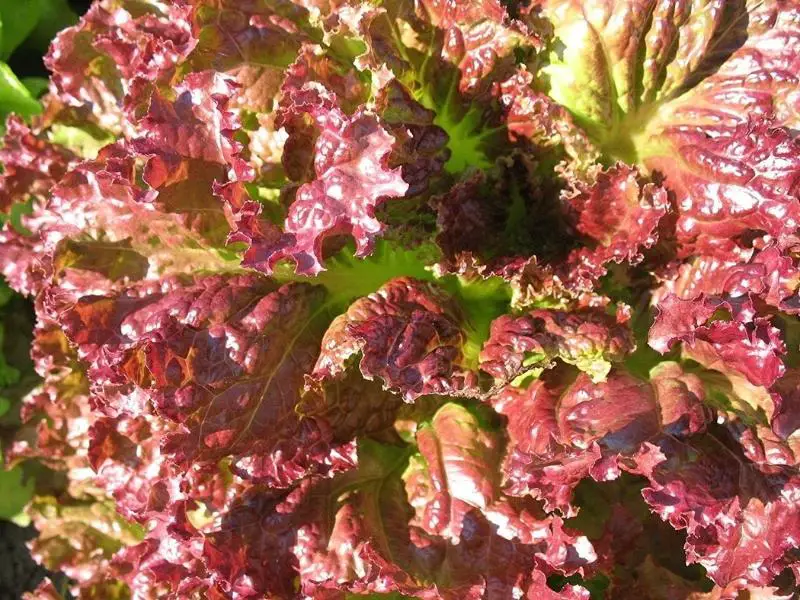
This loose-leaf lettuce variety gets its name from its vibrant red frilled leaves. It has a crisp, slightly sweet flavor. New red fire is ideal for beginner gardeners because it has high resistance to bolting, copes well in hot climates, and can grow in full sun or partial shade.
New red fire reaches 12 inches tall with a spread of 4 to 19 inches and prefers moist soil at a pH between 5.8 and 7.0. While hardy, this red leaf lettuce doesn’t tolerate frost.
Salad Bowl Lettuce
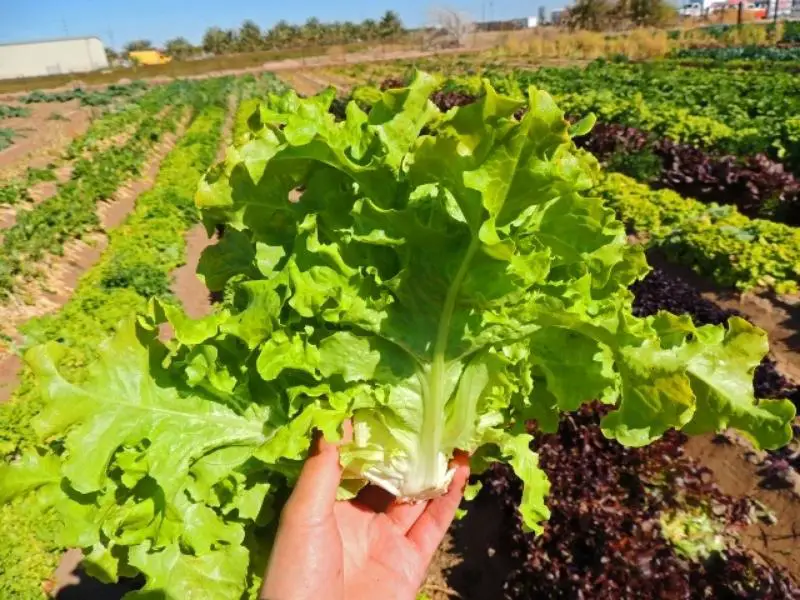
Salad bowl is a slow-bolting oak leaf lettuce that reaches 6 inches tall. The lettuce has a crunchy texture, sweet flavor, and tender, deeply lobed leaves that resemble oak leaves. The lettuce is typically a light green hue, though a red variety exists. The salad bowl is an All-America Selections (AAS) winner.
The plant matures within 50 days and grows well in full sun. Sow salad bowl varieties between March and August for harvest in June through October. Moist, fertile soil with a pH between 6.5 and 7.5 is ideal.
Little Gem Lettuce
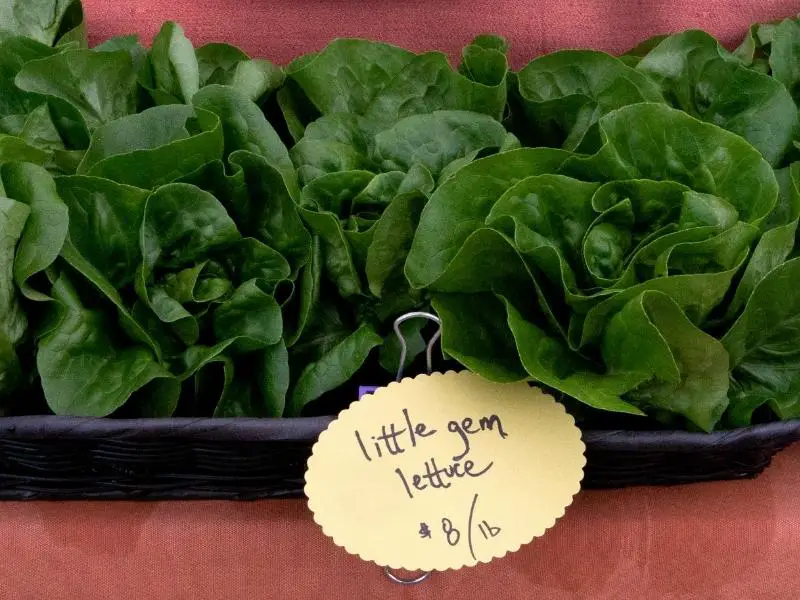
Little gem lettuce, also known as mini romaine lettuce, produces green furled leaves that have a sweet, slightly nutty taste and crinkled texture. The head is compact, oblong-shaped, and around 4 inches in diameter. A red gem lettuce variety is also available and shares a similar flavor profile to the little gem lettuce.
Little gem is easy to grow and matures quickly. Because this variety has a small, shallow root system, it makes a wonderful addition to containers, hanging baskets, or window boxes. Position the plant in full sun and water it twice per week.
Lobjoits Green Lettuce
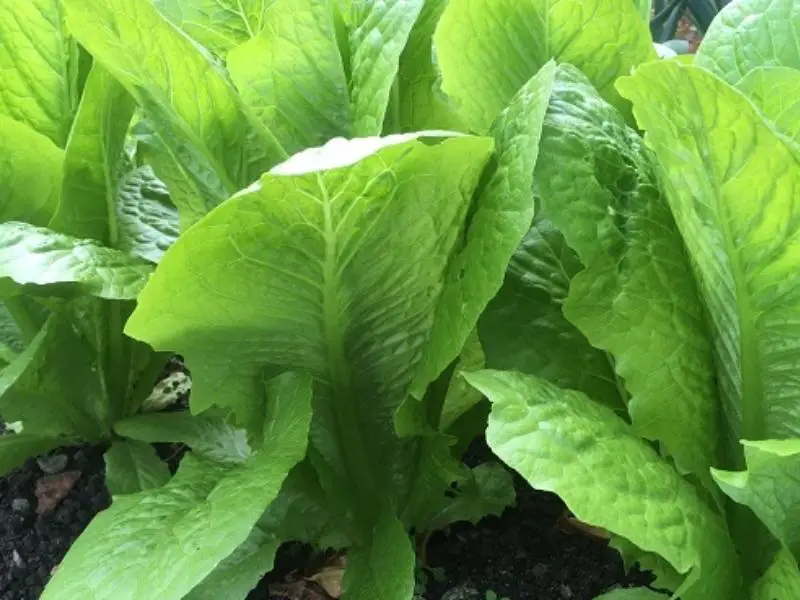
Lobjoits green is a large cos lettuce variety known for its dark green outer leaves, crispy, pale-colored head, and bold, sweet flavor. This lettuce is compact and reaches a height of up to 10 inches.
This variety should be planted in fertile, well-draining, neutral soil under full sun. Sow lobjoits outdoors in small batches throughout spring and fall and keep the soil around each plant moist. The plant reaches maturity within 10 to 14 weeks.
Ithaca Lettuce
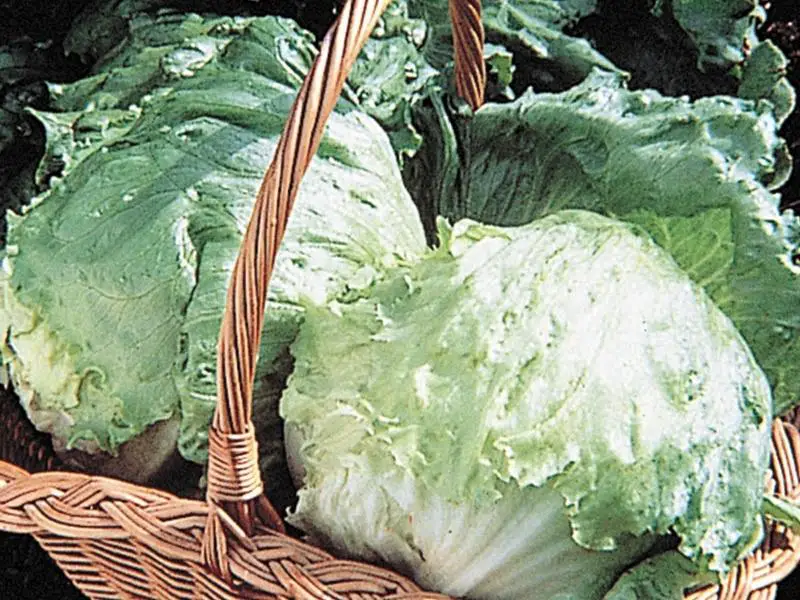
Ithaca, a variety of iceberg lettuce, has green outer leaves, a well-wrapped head, and a crispy texture. At full maturity, Ithaca lettuce has a head size of around 5 inches and a spread of 12 inches. The plant can tolerate transplanting well and is particularly resistant to tip burn and rib discoloration.
Ithaca has a long growing season and thrives in full sun to partial shade, at temperatures between 40 and 75°F. Space seeds at least 5 inches apart and sow them after the last frost. Overcrowding these plants can cause their leaves to develop a bitter taste.
Crispino Lettuce
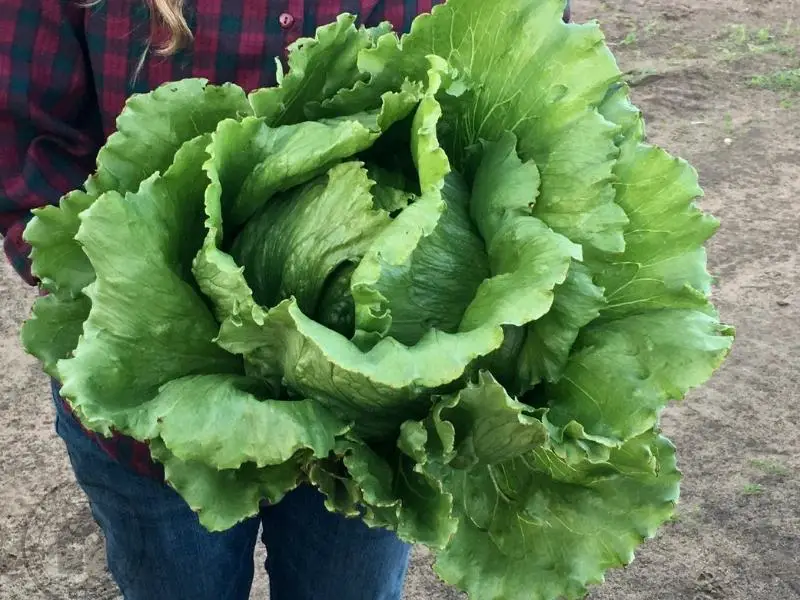
Crispino is medium-sized crisphead lettuce characterized by its firm, uniform head, light green frilled leaves, and mild but juicy flavor. Unlike many other lettuces, Crispino doesn’t have a bitter aftertaste. The lettuce reaches maturity within 50 to 78 days.
Crispino does best in moist soil with six hours of light per day. However, this variety can thrive in a range of conditions, including warm, humid environments and low temperatures. With proper acclimatization, Crispino can tolerate temperatures as low as 20°F.
Harden-off Crispino lettuce for a few days before planting it in cool weather — a process that involves gradually exposing the lettuce to outdoor conditions to strengthen the cuticles on its leaves. Add a layer of compost to help keep the soil moist.
Tom Thumb Lettuce
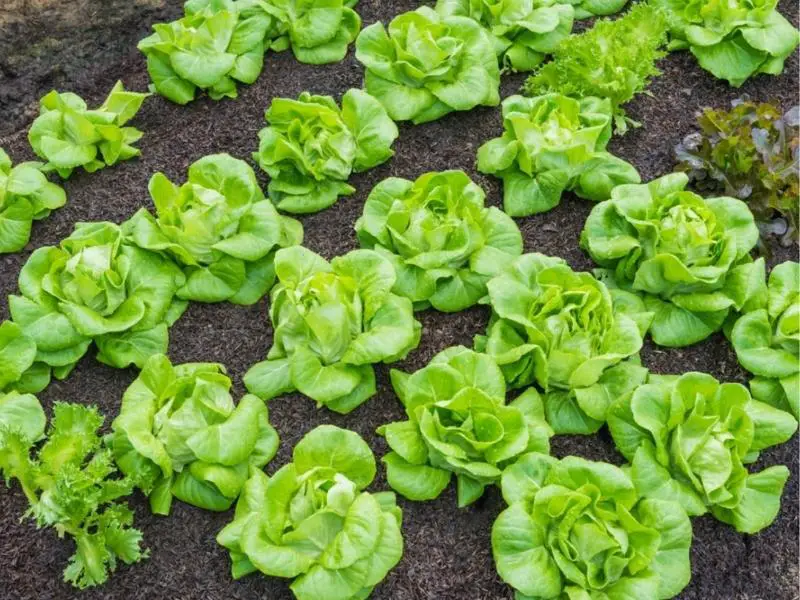
Tom Thumb lettuce is a miniature butterhead that’s popular among gardeners for its compact size, uniform growth, and sweet, buttery flavor. The lettuce has bright green, crumpled leaves and tolerates light frost. Tom’s thumb is well-suited to small gardens, containers, and window boxes.
This variety is easy to care for and thrives in full sun to partial shade. Sow Tom thumb from March to August, spacing seeds 8 inches apart.
Boston Lettuce
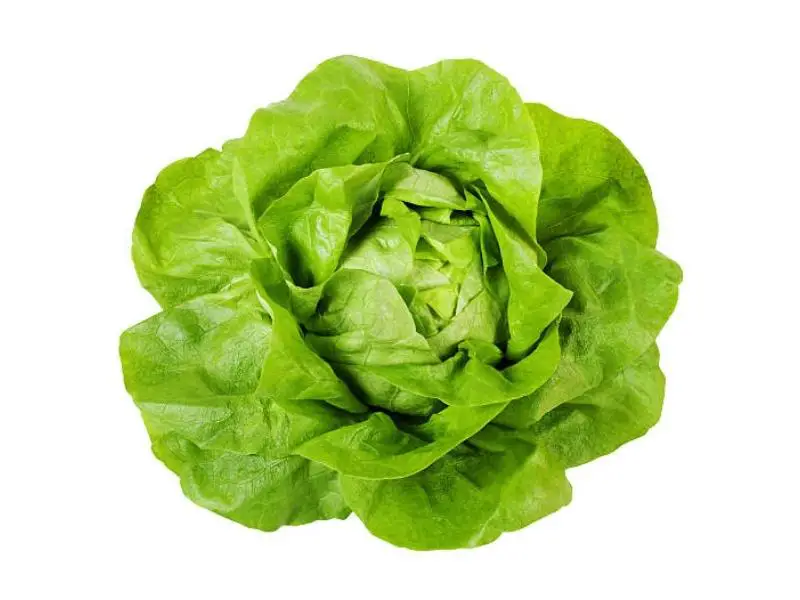
Boston, a type of butterhead lettuce, has large, petal-like outer leaves that are smooth, slightly cupped, and tender. The center leaves are tightly-wrapped and have a pale yellow hue. Boston lettuce typically reaches 9 to 12 inches tall and has a mild, nutty, sweet flavor.
Boston lettuce is considered an ideal vegetable to grow at home because it tolerates cool weather, has minimal care needs and can survive the harsh weather conditions that many other plants struggle with. For best growth results, plant Boston lettuce in full sun and well-draining soil.
Bibb Lettuce
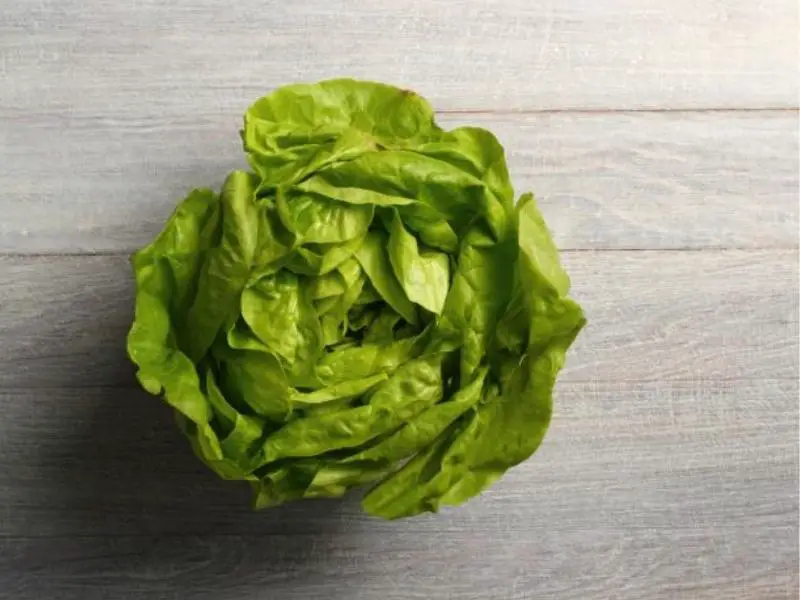
Bibb lettuce is a popular butterhead variety that resembles a blooming rose. The heads are small and the leaves are bright green, tender, and slightly sweet. At maturity, Bibb lettuce reaches up to 12 inches tall.
Bibb lettuce can grow in hot climates, but it should be planted in partial shade to prevent the plant from bolting and wilting. Space Bibb lettuces 10 to 12 inches apart.
Flashy Butter Oak Lettuce
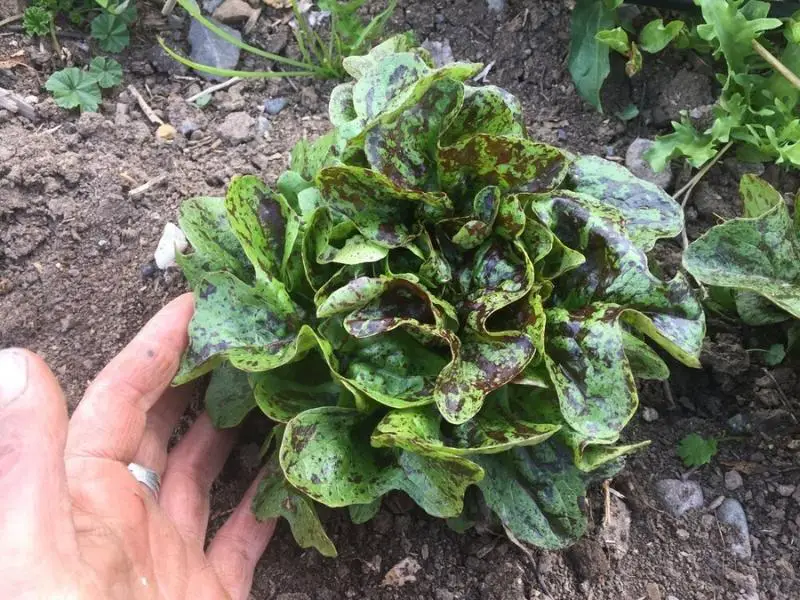
Flashy butter oak is a type of butterhead that reaches full maturity within 54 days. The lettuce has a medium-sized head, a buttery texture, and light green, oak-like leaves with red speckles. Flashy butter oak isn’t prone to bitterness, even when grown in hot weather.
Flashy butter oak lettuce is versatile and can be used for baby leaf production or allowed to mature. Keep the lettuce in full sun and space seeds at least 6 inches apart.
Easiest Lettuce to Grow
Loose-leaf lettuces are the easiest lettuce varieties to grow because they’re tolerant of a wide range of soils, can survive periods of frost, need minimal care, and the seeds germinate quickly. These varieties thrive in raised rows, containers, window boxes, hanging baskets, or patio planters.
How to Grow Lettuce in Your Garden
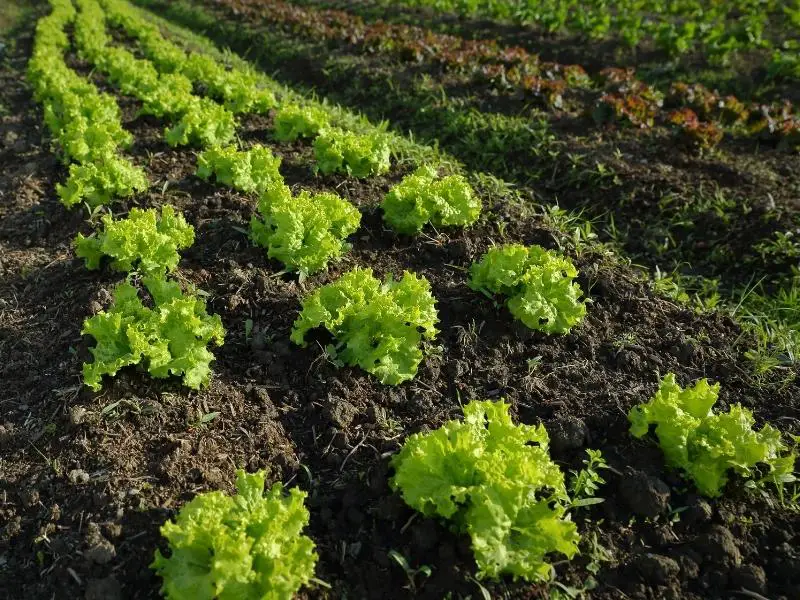
Most lettuces thrive in cool weather, full sun, and loose soil. Different lettuce varieties have different humidity and fertilizer needs. Below, we cover the tips and tricks for growing lettuce in your garden.
When to Plant
Lettuce is accustomed to cool weather and should be planted in spring or as a fall crop. Most varieties can tolerate temperatures as low as 45°F, but lettuces grow best in temperatures between 60 and 65°F. It’s possible to sow lettuce seeds in the winter as long as you grow the seeds indoors in a warm, well-lit environment.
Plant lettuce in areas that receive full sunlight. Certain lettuce varieties, particularly fast-growing species, can happily grow in partial shade. Never plant lettuce in sheltered, dark areas that receive minimal light, and avoid damp, humid areas that lack air circulation.
Lettuce Plant Care
Lettuce is a hardy plant but must be cared for correctly to produce healthy leaves.
Lettuce thrives in temperatures between 60 and 65°F, and in full sun with at least six hours of light per day. In particularly hot weather, lettuce should be grown in partial shade to prevent bolting. The soil must be loose, well-draining, and have a pH level of 6 to 7.5. Add organic compost or a nitrogen-rich fertilizer to encourage fast leaf growth.
Grow lettuce in moderate humidity levels, ideally between 50% and 70%. High humidity can affect leaf yield and make the lettuce susceptible to downy mildew. Keep the environment well-ventilated to reduce humidity.
Water lettuce twice a week or when the soil feels dry. Lettuce kept in containers should be watered more frequently.
Harvesting Lettuce
Loose-leaf lettuces should be harvested after six weeks, or once their leaves reach 3 to 4 inches in size. Whole-head lettuces should be harvested after 10 weeks or when a firm head has formed. Most lettuces reach maturity within 60 days. Harvest lettuce during the coolest times of the day to prevent the leaves from wilting.
How to Grow Lettuce From Seeds
Lettuce seeds can be grown inside or indoors, as long as the temperature remains below 70°F and the seeds have access to sunlight. Sow seeds ½-inch deep in the soil and space them at least 5 inches apart in rows. Mist the soil daily or when it’s dry to the touch. Most lettuce seeds germinate within 10 days.
Use succession planting, sowing the seeds every few weeks, to allow for a steady supply of lettuce throughout the year.
FAQs About Lettuce Growing
Answers to frequently asked questions about growing lettuce include:
Is Lettuce Easy to Grow?
Lettuce is one of the easiest crops to grow. Most lettuces, especially loose-leaf varieties, thrive in various soil conditions, grow quickly, and can tolerate bouts of frost. The harvesting process is also simple.
How Long Does it Take to Grow Lettuce?
Growing lettuce takes six to eight weeks, depending on the variety of lettuce and the plant’s growing conditions. Loose-leaf varieties grow faster than other lettuces, especially when kept in full sun and fertilized soil.
Does Lettuce Come Back Every Year?
Yes, lettuce comes back every year. Lettuce can regrow once harvested if the roots are still intact and the leaves have been appropriately cut. Leave 1 to 2 inches of lettuce above the soil when clipping the plant to allow for proper regrowth, and water regularly after each trim.

